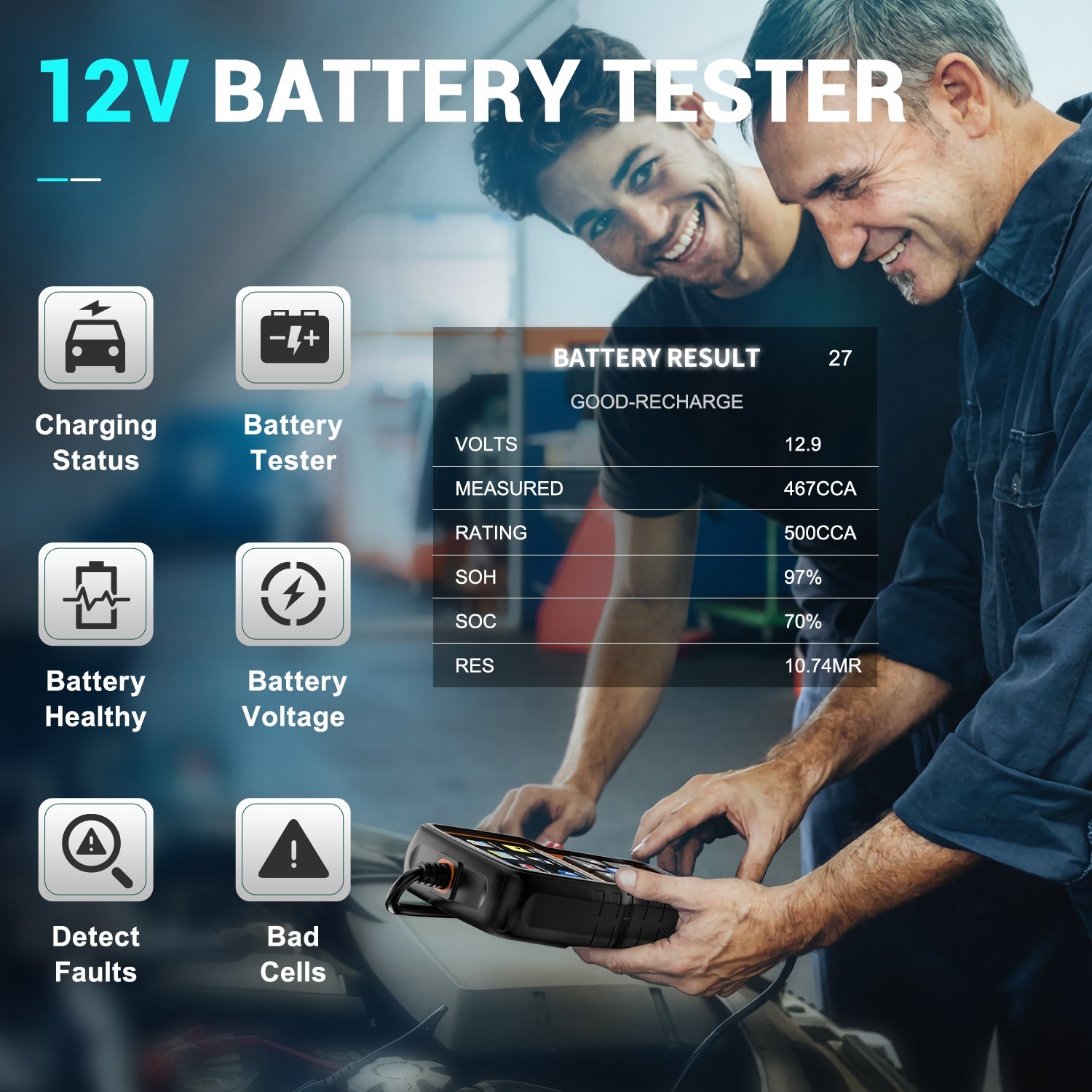OBD2 (Onboard Diagnostics II) scanners have revolutionized car maintenance and diagnostics, evolving into indispensable tools for both seasoned mechanics and car enthusiasts. As vehicles grow increasingly sophisticated with electronic systems, these scanners provide a vital link to your car’s computer, offering insights into engine performance and various vehicle functions. Among the advanced capabilities of modern OBD2 scanners, the TPMS (Tire Pressure Monitoring System) reset feature stands out, particularly with the convenience of Bluetooth Obd2 Tpms Readers.
Understanding OBD2 Scanners: The Basics
OBD2 scanners are essentially second-generation diagnostic tools designed to interface with your vehicle’s onboard computer system. By plugging into the OBD2 port, typically located beneath the dashboard, these devices can access a wealth of data from the car’s Electronic Control Units (ECUs). This data ranges from generic fault codes applicable across various makes and models to manufacturer-specific codes that offer deeper, more nuanced diagnostic information. This capability allows for quicker issue identification, ensures efficient vehicle operation, and aids in maintaining emission standards.
The Critical Role of TPMS in Today’s Vehicles
Tire Pressure Monitoring Systems (TPMS) have become a standard safety feature in modern vehicles. These systems are engineered to proactively monitor tire pressure and alert drivers when one or more tires fall below a safe pressure threshold. Low tire pressure can compromise vehicle safety, fuel efficiency, and tire lifespan. Recognizing the importance of TPMS, many countries, including the US since 2007, have mandated their inclusion in vehicles. This legal requirement further underscores the value of bluetooth OBD2 TPMS readers which offer TPMS reset functionality.
Diving Deeper: OBD2 Scanners with TPMS Reset and Bluetooth Connectivity
The Power of Bluetooth OBD2 Scanners
Traditional OBD2 scanners require a wired connection to your device. Bluetooth OBD2 TPMS readers take convenience to the next level by offering wireless connectivity to smartphones, tablets, or laptops. This wireless capability enhances user mobility and simplifies the diagnostic process, allowing for real-time data monitoring without being tethered to the OBD2 port.
Why TPMS Reset is a Must-Have Feature
Maintaining proper tire pressure is not just about safety; it’s about optimizing your vehicle’s overall performance. TPMS plays a crucial role by:
- Enhancing Safety: Reducing the risk of tire blowouts and improving vehicle handling.
- Improving Fuel Efficiency: Correctly inflated tires minimize rolling resistance, leading to better gas mileage.
- Extending Tire Life: Proper inflation ensures even tire wear, maximizing the lifespan of your tires.
A TPMS alert allows you to address tire pressure issues promptly, preventing potential hazards and ensuring safer driving conditions for yourself and others. Bluetooth OBD2 TPMS readers with reset capabilities are invaluable in maintaining these safety and performance standards.
Key Features to Look For in a Bluetooth OBD2 TPMS Reader
When choosing a bluetooth OBD2 TPMS reader, consider these essential features:
Broad Vehicle Compatibility: The best readers should be compatible with a wide range of vehicle makes and models, including both domestic and foreign vehicles. This ensures that the tool is versatile and can be used across different vehicles you might own or service.
Accurate and Reliable TPMS Reset Functionality: Accuracy is paramount when resetting and calibrating the TPMS. The reader should reliably communicate with the vehicle’s ECU to ensure precise tire pressure readings and correct system calibration after tire service or replacements.
User-Friendly Bluetooth Connectivity: Seamless and stable Bluetooth connectivity is crucial for a hassle-free experience. The reader should easily pair with your devices and maintain a reliable connection during diagnostics and TPMS resets.
Intuitive App Interface: A well-designed mobile app is essential for displaying diagnostic data and guiding you through TPMS reset procedures. The app should be user-friendly, easy to navigate, and provide clear instructions.
Additional Diagnostic Features: Beyond TPMS reset, look for readers that offer a comprehensive suite of diagnostic capabilities, such as reading and clearing fault codes, live data streaming, and potentially advanced functions like ABS or SRS diagnostics.
As vehicles become more technologically advanced, bluetooth OBD2 TPMS readers are becoming indispensable tools for both professional mechanics and car owners who prioritize vehicle safety and maintenance.
How to Use a Bluetooth OBD2 TPMS Reader for Resetting TPMS
Using a bluetooth OBD2 TPMS reader for TPMS reset is straightforward. Here’s a general step-by-step guide, using a Foxwell device as an example, a leading brand in automotive diagnostic tools:
Step-by-Step Guide to TPMS Reset with a Bluetooth OBD2 Scanner
1. Preparation: Ensure your bluetooth OBD2 TPMS reader is charged. For Foxwell devices like the NT530, ensure the device firmware and software are up to date for optimal vehicle compatibility.
2. Locate the OBD2 Port: Typically found under the dashboard, near the steering column. Refer to your vehicle’s owner manual if needed.
3. Connect and Pair: Plug the bluetooth OBD2 TPMS reader into the OBD2 port. Turn the vehicle ignition to the “ON” position (do not start the engine). Pair the reader with your smartphone or tablet via Bluetooth.
4. Launch the App and Navigate to TPMS Diagnostics: Open the scanner’s app on your device and navigate to the TPMS diagnostics or reset section. Foxwell scanners, for instance, are known for their user-friendly interfaces.
5. Perform TPMS Reset: Follow the on-screen prompts to initiate the TPMS reset or relearn procedure. Instructions may vary slightly depending on your vehicle’s make and model, and the specific scanner app.
6. Check for Error Codes: After the reset, the scanner app may display any TPMS-related error codes. Note these down as they can provide further insights into potential issues, such as sensor malfunctions.
7. Clear Codes (if necessary): If error codes are present and you’ve addressed any underlying issues, use the scanner app to clear the codes.
8. Test the System: After resetting and clearing codes, take your vehicle for a short drive to ensure the TPMS warning light remains off and the system is functioning correctly.
Troubleshooting Common Issues with Bluetooth OBD2 TPMS Readers
Connection Problems: If your bluetooth OBD2 TPMS reader fails to connect, ensure Bluetooth is enabled on your device and the reader is properly plugged into the OBD2 port. Verify vehicle compatibility and reader software updates.
Persistent TPMS Errors: If TPMS error codes reappear after resetting, it could indicate sensor issues, wiring problems, or ECU communication faults. Check sensor batteries and consult your vehicle’s service manual for further diagnostics.
Inaccurate Tire Pressure Readings: Inaccurate readings post-reset might suggest sensor miscalibration or the need for manual TPMS relearn procedures, as outlined in your scanner’s instructions or vehicle manual.
Software and Firmware Updates: Keep your bluetooth OBD2 TPMS reader updated with the latest firmware and software from the manufacturer’s website to maintain compatibility with new vehicles and TPMS technologies. Regular updates ensure optimal performance and access to the latest features.
Maintaining Your Vehicle with a Bluetooth OBD2 TPMS Reader
Regular use of a bluetooth OBD2 TPMS reader with TPMS functionality is crucial for proactive vehicle maintenance and ensuring safe driving conditions.
Essential Maintenance Tips Using Your Bluetooth OBD2 TPMS Reader
Regular Tire Pressure Checks:
- Monthly Checks: At least once a month, and before long journeys or carrying heavy loads, use your bluetooth OBD2 TPMS reader to check tire pressures. It provides quick, accurate readings for all tires.
- Cold Tire Readings: Always check tire pressure when tires are cold for the most accurate readings. Morning checks or checking after the car has been parked for several hours are ideal.
- Adhere to Recommendations: Locate the tire pressure sticker (usually on the driver’s side doorjamb or in the owner’s manual) and use your reader to ensure each tire meets these specifications.
Benefits of Proper Tire Pressure:
- Enhanced Safety: Reduces the risk of tire blowouts and improves overall vehicle safety.
- Improved Performance: Optimizes handling and braking.
- Fuel Economy: Improves gas mileage by reducing rolling resistance.
- Extended Tire Life: Minimizes uneven wear and maximizes tire lifespan.
Regular TPMS Resets are Beneficial:
- Accurate Monitoring: Reset the TPMS after tire rotations or replacements to ensure the system accurately monitors each tire’s position and pressure.
- Extended Tire Life: Proper TPMS function helps maintain even tire wear, prolonging tire life.
- Warranty Compliance: Maintaining records of TPMS checks and resets using your bluetooth OBD2 TPMS reader can be valuable for warranty claims.
- Diagnostic Insights: TPMS data can help diagnose issues like valve stem leaks or sensor failures.
- Environmental Responsibility: Optimal tire pressure contributes to better fuel efficiency and reduces tire waste.
Conclusion: Embrace the Convenience of Bluetooth OBD2 TPMS Readers
Choosing a bluetooth OBD2 TPMS reader with TPMS reset capability is a smart investment for anyone looking to maintain their vehicle proactively. It’s more than just a convenient tool; it’s an essential device for ensuring critical safety systems like TPMS are functioning correctly. By empowering vehicle owners and technicians to maintain optimal tire pressure and system functionality, bluetooth OBD2 TPMS readers directly contribute to vehicle safety, efficiency, and longevity.
FAQ
Can any Bluetooth OBD2 scanner reset TPMS?
No, not all bluetooth OBD2 scanners have TPMS reset functionality. Look for models specifically advertised with this feature.
How often should I reset my TPMS?
Reset your TPMS after tire rotations, tire replacements, or any time you receive a TPMS warning light, even if tire pressure seems normal.
Is a Bluetooth OBD2 TPMS reader necessary if my car has a TPMS reset button?
While some vehicles have a reset button, a bluetooth OBD2 TPMS reader offers more comprehensive diagnostics, going beyond simple resets to provide detailed system checks and error code analysis.

